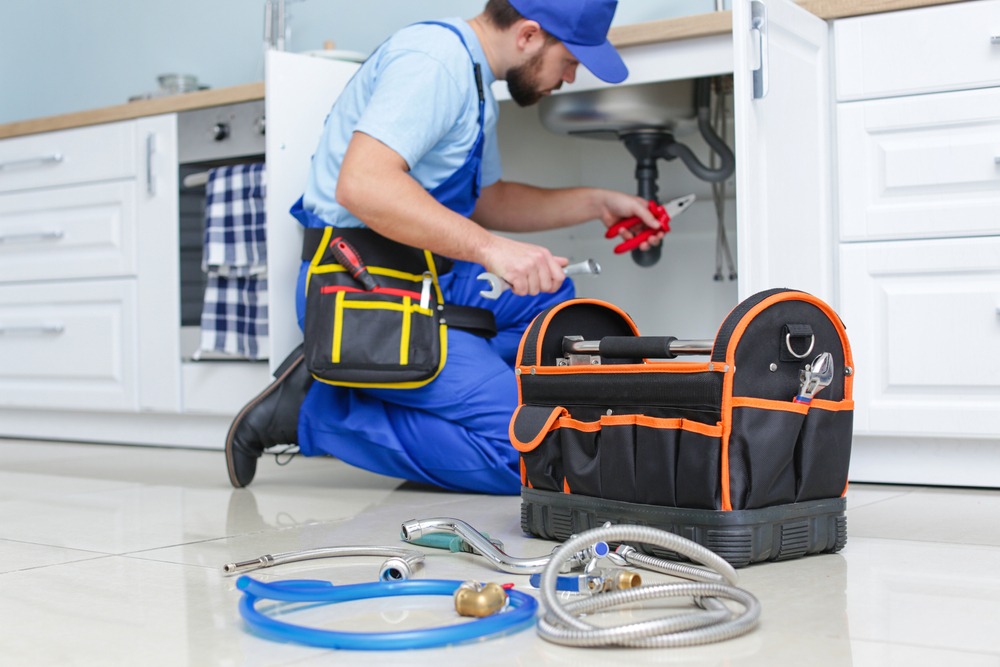Trusted Plumbing Services Alabaster AL for All Your Repair works
Wiki Article
A Detailed Guide to Reliable Hot Water Heater Installation for Optimum Performance
Getting started on the job of mounting a water heating system is a venture that requires accuracy and a methodical technique for achieving optimum efficiency. As you proceed, the ins and outs of attaching water supply lines and establishing up reliable electrical or gas links await, promising understandings into guaranteeing efficiency and dependability.Selecting the Right Hot Water Heater

Following, think about the size and ability of the water heating system. It's important to assess your house's hot water needs, which can vary based on the variety of occupants and their usage patterns. A system that's too tiny may bring about not enough warm water, while an oversized version might cause unneeded energy consumption.
Performance ratings additionally play a pivotal function in choice. Look for hot water heater with high Power Aspect (EF) ratings, indicating superior efficiency and lowered power usage. Tankless models, though typically more costly ahead of time, offer significant power savings in time due to their on-demand heating capabilities.
Preparing the Installment Area
Before setting up a brand-new water heater, precise prep work of the installment area is vital. It's essential to gauge the room thoroughly to fit the water heating system's dimensions, making sure ample clearance around the device for efficient operation and maintenance.Next, get rid of any kind of particles, dirt, or obstructions from the site to create a clean atmosphere. Check the flooring for stability, as the hot water heater will require a solid, level surface to operate properly. If needed, install a drip pan underneath the device to capture possible leakages or spills, protecting against water damages to the surrounding location. In areas prone to seismic activity, think about installing seismic bands to secure the heater securely in position.
Furthermore, guarantee that all essential devices and products get on hand before commencing the installation. This includes products such as wrenches, screwdrivers, a degree, and any kind of extra hardware required for placing and protecting the heating system. A well-prepared setup location sets the structure for an effective water heater setup, maximizing efficiency and safety.
Connecting Water Lines
When linking supply of water lines to your freshly set up water heater, it is crucial to make sure that all links are protected and leak-free to preserve efficient operation and stop water damages. Begin by determining the chilly and warm water system lines. The cool water inlet is normally marked with a blue label or a "C", while the warm water electrical outlet is noted with a red tag or an "H".Usage versatile water heating system connectors to assist in a much easier installment company website procedure. Prior to connecting the adapters, place a plumber's tape around the threaded ends of the water heating system's inlet and electrical outlet pipes.
When links remain in location, gradually switch on the major water supply shutoff. Inspect each link for leaks by aesthetically inspecting and feeling for wetness. Tighten links as necessary, and make certain the stress alleviation valve is correctly installed, safeguarding versus excessive pressure build-up.
Setting Up Electrical or Gas Links
Appropriately setting up the electrical or gas connections for your water heating unit is a critical step to ensure secure and efficient procedure. For electric water heating systems, start by confirming that the electrical circuit is compatible with the heater's voltage and amperage requirements.For gas water heaters, safety is vital. Link the gas line to the water heater making use of a flexible gas adapter, ensuring it is effectively threaded and sealed with pipeline joint substance or Teflon tape ideal for gas links.
When connections are made, go to these guys examine for any prospective leaks. For gas lines, use a soapy water solution to the joints; bubbles suggest a leakage. For electric links, ascertain that all circuitry is safe and properly shielded, keeping compliance with local electric codes.
Examining and Adjusting for Performance
With the electrical and gas links safely in place, the next action is evaluating the operational efficiency of your water heating system. Begin by carefully activating the water and making certain there are no leakages at any one of the shutoffs or joints. When validated, continue to fill the storage tank, paying focus to the pressure and temperature level setups. It is a good idea to set the thermostat to a recommended temperature of around 120 ° F(49 ° C) to stabilize energy performance and convenience.Next, perform a thorough examination to ensure the burner or burner are operating correctly. For electric heating systems, make use of a multimeter to verify if the components are drawing the ideal current. In gas versions, observe the burner fire; it must be blue and stable, indicating effective combustion.
Change the settings as essential to eliminate inadequacies. Take into consideration applying insulation steps, such as including a hot water heater covering, to even more boost performance by decreasing warmth loss. Furthermore, check the navigate to this website anode pole's problem, as a shabby pole can reduce efficiency and lead to tank rust.
Conclusion
Effective water heater setup is critical for ensuring ideal performance and power savings. By selecting the appropriate kind and dimension, and diligently preparing the installment location, a foundation for success is established. Safely attaching supply of water lines and very carefully establishing electrical or gas links minimize potential problems. Thorough testing for leakages and accurate thermostat changes to 120 ° F improve integrity and efficiency. Following these steps promotes long-lasting capability and power conservation in residential water furnace.
Correctly establishing up the electric or gas connections for your water heating unit is an important action to guarantee secure and efficient operation. For electrical water heating units, start by confirming that the electric circuit is suitable with the heating system's voltage and amperage needs. Attach the gas line to the water heating system utilizing an adaptable gas port, ensuring it is effectively threaded and sealed with pipe joint substance or Teflon tape appropriate for gas connections.
Report this wiki page